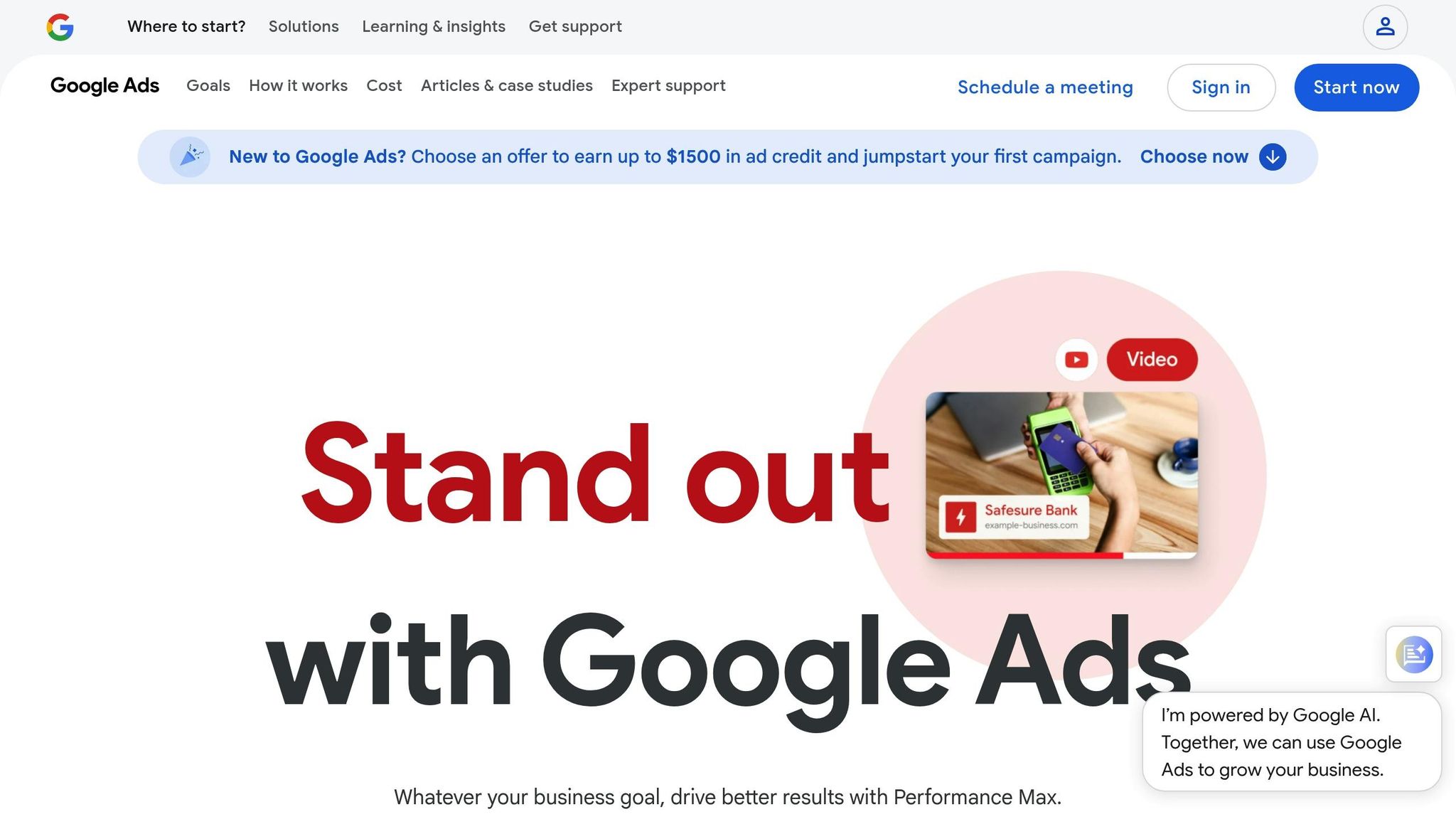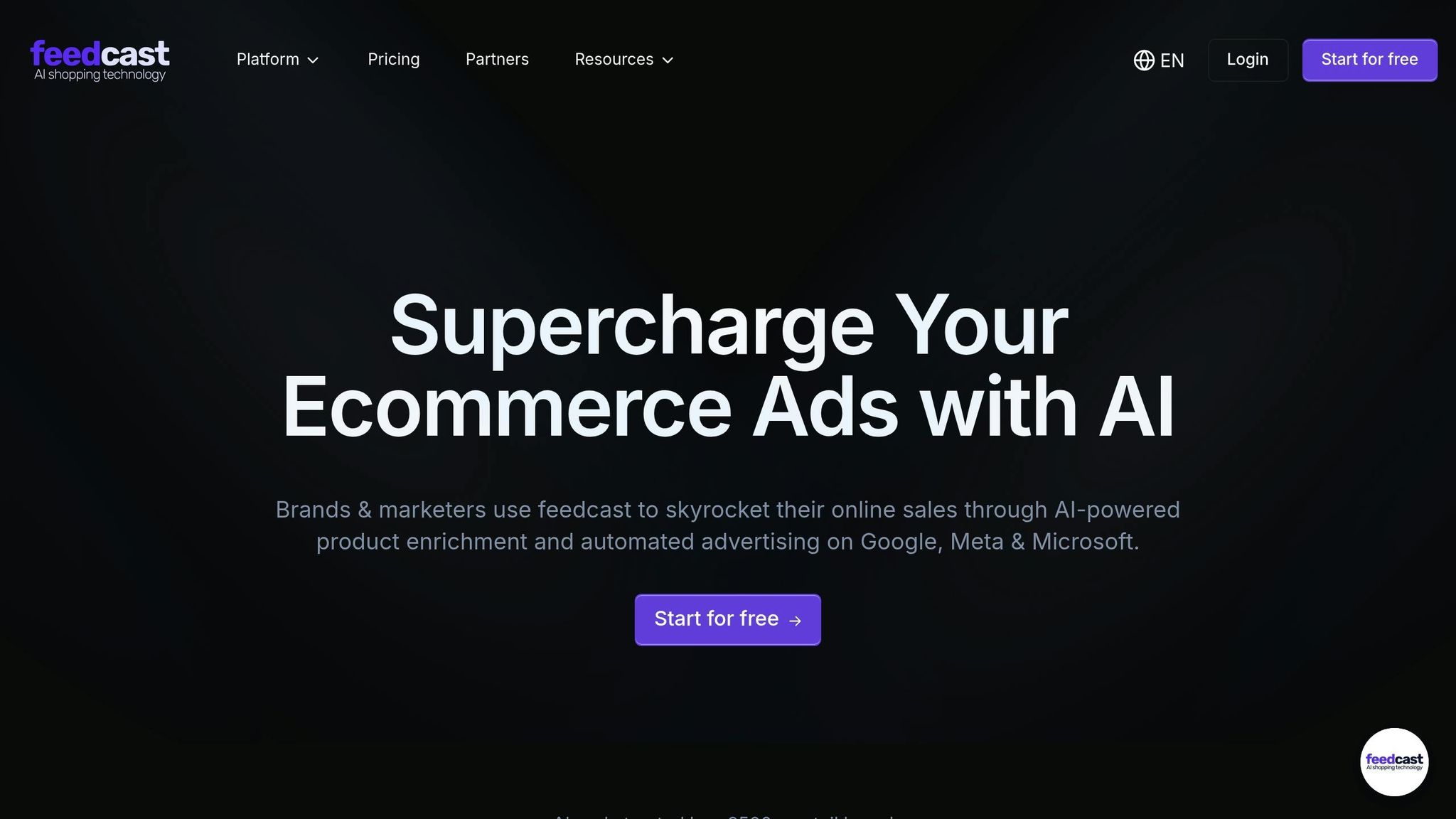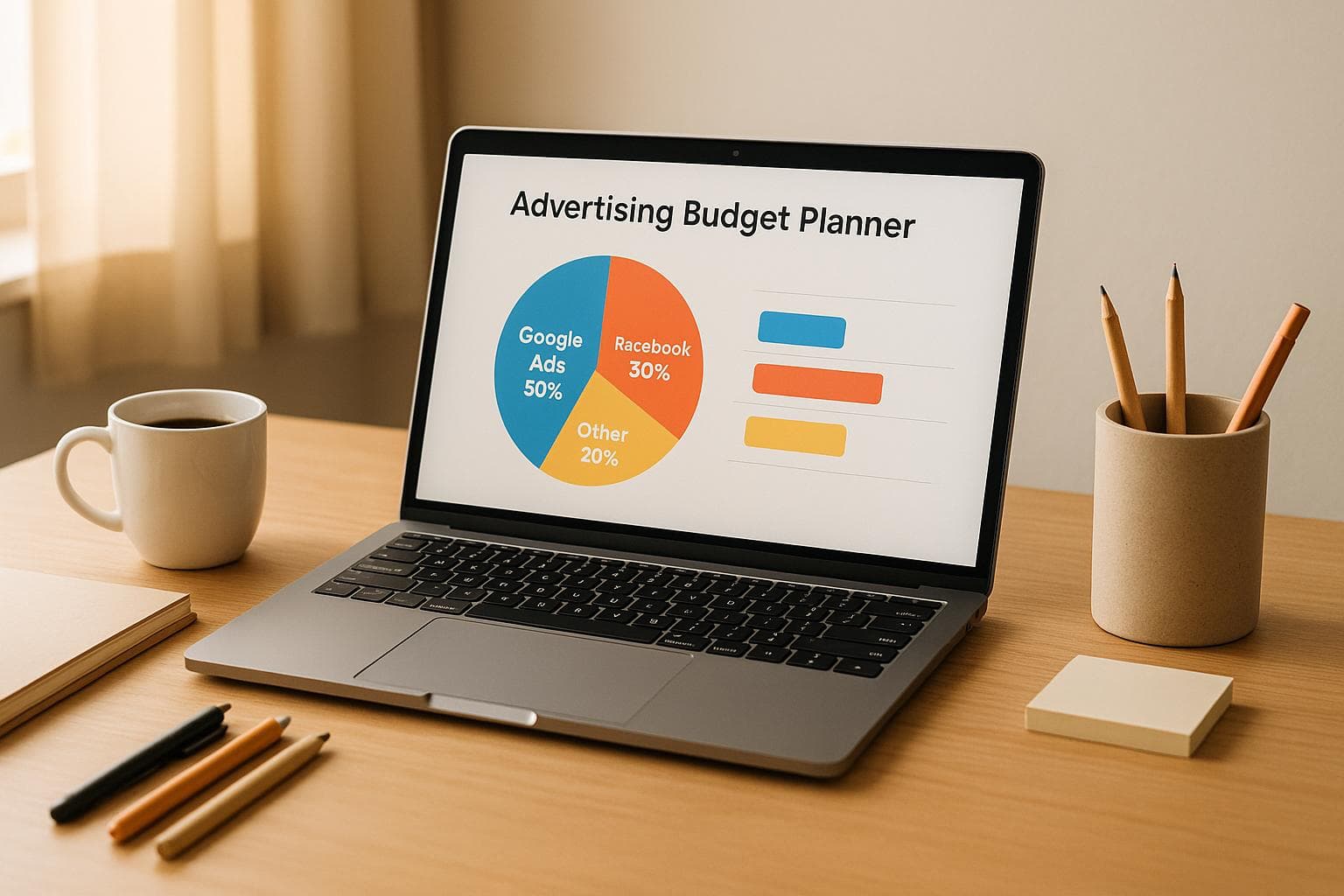Comment le layering d'audiences augmente le CTR sur Google Ads
Audience layering in Google Ads is a powerful way to improve click-through rates (CTR) and drive better ad performance. By combining multiple audience criteria - like remarketing data, demographics, and in-market behaviors - you can target users more precisely, ensuring your ads reach people most likely to engage and convert. This approach reduces wasted ad spend, increases relevance, and enhances ROI.
Key Takeaways:
- What is Audience Layering? It’s the process of narrowing down your audience by combining different targeting signals (e.g., website visits, purchase intent, demographics).
- Why it Works: Targeting users who meet multiple conditions ensures higher relevance and engagement, leading to a 35% increase in CTR in some cases.
- Steps to Implement: Start with a primary audience (e.g., website visitors), layer additional criteria (e.g., in-market users), adjust bids for high-performing segments, and exclude low-value audiences.
- AI Tools: Platforms like Feedcast.ai can automate audience layering, optimize bids, and analyze performance for better results.
The bottom line: Audience layering focuses your ad spend on users who are more likely to convert, making your campaigns more efficient and effective.
What is Audience Layering in Google Ads

Audience Layering Explained
Le layering d'audiences consiste à combiner plusieurs critères pour créer des profils détaillés de vos clients idéaux. Pensez-y comme à la construction d'un entonnoir : chaque couche que vous ajoutez restreint votre audience pour la rendre plus spécifique.
Par exemple, commencez par cibler les personnes qui ont visité votre site. Affinez ensuite ce groupe pour vous concentrer sur celles intéressées par une catégorie de produits particulière. Enfin, ciblez les utilisateurs situés dans des zones géographiques précises. Le résultat ? Une audience plus petite mais hautement qualifiée, beaucoup plus susceptible d'interagir avec vos annonces.
Cette méthode peut améliorer considérablement les performances de vos annonces, car vous atteignez des utilisateurs répondant à plusieurs critères au lieu d'un seul. Lorsqu'un internaute coche toutes les cases de votre ciblage en couches, il a beaucoup plus de chances de convertir.
Ce qui rend le layering d'audiences si polyvalent, c'est le niveau de contrôle qu'il vous offre. Si votre objectif est la portée, vous pouvez utiliser moins de couches. Si la précision est votre priorité, ajoutez davantage de filtres. Cette flexibilité vous permet d'ajuster vos campagnes pour qu'elles correspondent parfaitement à vos objectifs commerciaux.
Passons maintenant aux différents types d'audiences que vous pouvez combiner dans Google Ads pour créer ces couches.
Types of Audiences You Can Layer
Google Ads provides several audience types that work well when layered together:
Remarketing audiences: These include users who have already interacted with your business, such as website visitors, app users, or YouTube viewers. Since they’re already familiar with your brand, they’re more likely to engage.
Affinity audiences: These are grouped by long-term interests and lifestyle habits. Google identifies them through browsing behavior, making this a great way to reach users whose interests align with your products - even if they haven’t interacted with your business yet.
In-market audiences: This group is made up of people actively researching or comparing products in specific categories. These users are often closer to making a purchase, making them especially valuable for e-commerce campaigns.
Custom audiences: Here, you define the audience yourself by using specific keywords, URLs, or apps. This option gives you the flexibility to create audiences tailored to your niche.
Demographic audiences: These include factors like age, gender, household income, or parental status. While demographics alone might not drive strong results, combining them with interest or behavioral data can make them a powerful addition to your targeting strategy.
How Layering Works: Logic and Reach
Once you’ve identified the audience types you want to use, it’s time to think about how to combine them. The logic you apply plays a big role in finding the right balance between reach and precision.
Using AND logic means your audience must meet all the criteria you’ve set. This narrows the group significantly but ensures high relevance. On the other hand, OR logic includes anyone who meets at least one criterion, which broadens your reach but may dilute relevance.
For instance, targeting users who are both part of a remarketing audience and in-market for a product creates a smaller, more focused group. Each additional layer you add will shrink the audience size, but this often leads to higher click-through rates (CTR) and conversion rates.
The key is to find the sweet spot. Your audience should be specific enough to drive strong results but large enough to generate meaningful traffic. Many successful e-commerce campaigns rely on this balance, though the ideal audience size will depend on factors like your industry and geographic focus.
How to Set Up Audience Layering Step-by-Step
What You Need Before Starting
Before diving into audience layering, it's essential to have a strong foundation for your campaigns. Start by gathering audience data from sources like your website analytics, customer databases, and Google Ads campaigns. Make sure your remarketing audiences are large enough to ensure consistent performance.
Define your campaign goals clearly. Are you aiming to drive immediate sales, boost brand awareness, or reconnect with previous customers? Your objectives will guide the types of audiences to focus on. For instance, if you're launching a new product, combining affinity audiences with custom intent audiences might yield better results than relying solely on remarketing lists.
Set up key performance indicators (KPIs) that align with your goals. Beyond click-through rates (CTR), monitor metrics like conversion rate, cost per acquisition (CPA), and return on ad spend (ROAS). Establish baseline data from your existing campaigns to measure the impact of audience layering accurately.
Ensure your tracking tools are fully operational. Google Analytics 4, Google Ads conversion tracking, and enhanced e-commerce tracking should all be set up correctly. This ensures that your layered audiences have the precise data they need to perform effectively. Once your goals and tracking are in place, you’re ready to start building your audience layers in Google Ads.
Building Layered Audiences in Google Ads
To implement audience layering in Google Ads, follow these steps:
Choose Your Primary Audience
Start by selecting the primary audience that aligns with your campaign goals. For example, if you're focusing on retention, a remarketing audience might be ideal. For customer acquisition, consider using an in-market audience. Your primary audience should be the largest and most relevant group for your objectives.Add Your Primary Audience
In Google Ads, navigate to the Audiences section. Use the pencil icon to add your primary audience. For instance, if you’re targeting website visitors, select your remarketing list.Layer a Secondary Audience
Without leaving the audience selection window, click « Ajouter une autre audience » to include a secondary layer. For example, if your primary audience is website visitors, you could layer in users who are in-market for your product category. Google Ads uses AND logic here, meaning users must belong to both groups to qualify.Adjust Bids for High-Value Segments
Fine-tune your bids for layered audiences that perform well. For example, if combining website visitors with a premium demographic consistently delivers strong results, consider increasing your bids for that audience mix.Set Up Exclusions
To avoid wasting your budget, exclude low-value segments. For instance, you might exclude users who recently converted (unless you're running a retention campaign) or audiences with poor historical performance. Testing different combinations in separate ad groups can help you identify the most effective layering strategies.
Once your audiences are built, focus on ongoing monitoring and adjustments to refine your approach.
Best Practices for Monitoring and Optimization
After launching your layered audience strategy, keep a close eye on campaign performance. Regularly review metrics like impression volume, CTR, and conversion rates to spot potential issues early. If impressions drop, your audience might be too narrow. On the other hand, overly broad audiences may not show noticeable improvements in CTR.
Leverage the Audience Insights report in Google Ads to identify overlap between your layered audiences. Significant overlap could reduce your reach and create competition between your ads. If needed, refine your audience definitions to minimize this issue.
Test your audience combinations methodically. Add one layer at a time and observe its impact over a consistent period. This will help you pinpoint which strategies are most effective. Adjust your bids based on performance data to maximize results.
Once you’ve collected enough conversion data, consider using automated bidding strategies like Target CPA or Target ROAS. These tools can optimize bids based on the unique characteristics of each audience segment.
Finally, create custom reports to track the performance of your audience layers. Monitoring metrics such as CTR, conversion rate, and ROAS will help you fine-tune your strategy. Don’t forget to update your remarketing lists and custom audiences regularly to reflect changing user behavior.
How Audience Layering Improves CTR and ROI
Better Relevance and Engagement
Audience layering refines ad targeting by focusing on users who meet multiple criteria, creating highly specific customer profiles. This approach ensures your ads reach people who are genuinely interested in what you offer, making them far more effective.
For example, a user who has visited your website, shown interest in a specific product category, and matches your ideal demographic is much more likely to engage with your ad than someone who only meets one of these conditions. By layering these signals, your ads feel more personalized - like they were made just for the viewer.
Google’s algorithm also benefits from this approach. It learns from these highly relevant interactions to find similar, high-value prospects, creating a feedback loop that boosts your campaign’s effectiveness over time.
Additionally, precise targeting allows for tailored ad copy and creative. When you know exactly who you’re speaking to, you can craft messages that address their specific needs and challenges. This level of personalization helps your ads stand out in a competitive digital landscape.
These improvements in engagement pave the way for the measurable ROI gains outlined below.
Measurable Benefits for E-commerce Advertisers
Audience layering doesn’t just improve engagement - it delivers real, measurable results. Consider the case of a mid-size e-commerce brand specializing in organic skincare products. During a seasonal promotion, they combined several audience signals: Health & Wellness Enthusiasts (affinity audience), users actively searching for Natural Skincare Products (in-market audience), past website visitors who hadn’t purchased (remarketing), and women aged 25–45 (demographics).
The outcome? A significant boost in key performance metrics:
| Métrique | Amélioration |
|---|---|
| Click-Through Rate (CTR) | +35%[1] |
| Conversion Rate | +22%[1] |
| Return on Ad Spend (ROAS) | +18%[1] |
By focusing ad spend on users with the highest likelihood to convert, this strategy minimizes wasted clicks and maximizes exposure to qualified prospects. The result is greater cost efficiency, as campaigns see reduced costs per acquisition (CPA) and cost per lead.
Audience layering also enhances conversion quality. Leads generated through layered targeting often have higher intent, making sales conversations more productive and increasing the chances of closing deals. In one instance, a client doubled their conversion rate by combining audience layering with smart bid adjustments[3], showcasing the power of precise targeting to drive meaningful results.
Long-term benefits are another advantage. As Google’s automated bidding strategies learn from your layered audience data, the platform becomes better at identifying and targeting high-value traffic. Over time, this leads to sustained improvements in both campaign performance and overall ROI[2].
sbb-itb-0bd1697
Using AI Tools Like Feedcast.ai for Smarter Audience Layering

The Role of AI in Audience Layering
Artificial intelligence takes audience layering to a whole new level by turning what used to be guesswork into a data-driven process. Traditionally, marketers had to manually sift through performance data and rely on educated guesses to figure out the best audience combinations. AI, on the other hand, processes massive amounts of user behavior data in real time, uncovering audience segments that are most likely to deliver results.
AI excels at spotting patterns that humans might miss. It analyzes countless data points - like browsing habits, purchase history, seasonal shifts, and even device usage - to suggest audience combinations that boost click-through rates. Instead of running endless tests, AI predicts which setups are most likely to succeed before you even launch your campaigns.
What’s more, AI enables dynamic optimization using predictive analytics. As your campaigns progress, it tracks performance, adjusts targeting automatically, and forecasts which audience layers will work best during key times, such as Black Friday or back-to-school shopping seasons. This kind of foresight is a game-changer for e-commerce businesses looking to stay ahead of seasonal trends.
Feedcast.ai builds on these AI capabilities, offering tools to fine-tune your audience layering strategy even further.
How Feedcast.ai Improves Audience Layering
Feedcast.ai simplifies the process of managing ads across multiple platforms with its unified dashboard. This centralized view helps you create consistent audience layers across all your advertising channels while taking full advantage of AI’s capabilities.
One standout feature is AI-powered product data enrichment. By enhancing your product feeds with detailed titles, comprehensive descriptions, and relevant attributes, Feedcast.ai ensures Google’s algorithms have the right signals to match your ads with the best audiences. The result? More precise targeting and better click-through rates.
The platform’s smart targeting tools analyze your customer data to uncover trends and recommend new audience combinations. Feedcast.ai identifies the demographic and behavioral traits of your highest-value customers and uses that insight to suggest layered audiences that mirror these profiles.
Another key feature is automated bid optimization, which works seamlessly with audience layering. As the AI pinpoints the best-performing audience layers, it adjusts bids in real time, directing more budget to high-performing segments and scaling back on less effective ones. This ensures your advertising dollars are always spent wisely.
With performance tracking across channels, you get a clear view of how your audience layers perform on different platforms. For instance, you might find that a certain audience combination thrives on Google but falls short on Facebook. This insight allows you to fine-tune your strategy for each platform, maximizing results.
Benefits for U.S. E-commerce Businesses
For U.S. e-commerce businesses, Feedcast.ai offers direct benefits like higher click-through rates (CTR) and better returns on investment (ROI). By automating campaign optimization, the platform saves marketers time and ensures advertising dollars are spent targeting the audience segments most likely to convert.
Managing campaigns across multiple platforms can quickly become overwhelming, especially as businesses grow their product lines. Feedcast.ai’s unified approach eliminates the need for constant manual adjustments, making it easier to launch and manage complex audience layering strategies without requiring a specialist for every platform.
As a Google CSS partner, Feedcast.ai also provides cost-saving advantages for U.S. businesses using Google Shopping campaigns. This partnership can lower ad costs while maintaining advanced audience layering, helping you stretch your budget further.
Finally, the platform’s scalability ensures your targeting remains sharp as your business grows. Whether you’re managing a catalog of 100 products or 100,000, Feedcast.ai’s AI-driven tools adapt to handle the added complexity, keeping your strategies effective no matter the scale.
Can you layer audiences in Google Ads? [Inside Google Ads Episode 24]
Conclusion: Getting Started with Audience Layering
Audience layering takes Google Ads from a scattershot approach to a sharp, targeted strategy designed to connect with users who show clear signs of purchase intent. By blending multiple audience segments, you create campaigns that speak directly to the right people at the right moments.
This method doesn’t just improve ad relevance - it boosts click-through rates, enhances Quality Scores, lowers costs per click, and secures better ad placements. For e-commerce businesses, this translates to a stronger return on investment by focusing on users who are actively signaling buying intent, rather than wasting budget on generic clicks from less interested audiences. Plus, this strategy is perfectly positioned to benefit from AI tools that can streamline your efforts even further.
The beauty of audience layering lies in its adaptability. Keep a close eye on performance metrics - many businesses notice significant improvements in CTR when they implement it correctly.
To make the process easier, tools like Feedcast.ai can handle the heavy lifting. With AI-driven optimization and unified campaign management, you can execute advanced audience layering strategies without needing to become a Google Ads expert. Feedcast.ai’s intelligent targeting suggestions can even reveal audience combinations you might not have considered.
Start with the customer data you already have, experiment with different audience combinations, track the results, and double down on what works. The longer you wait, the more opportunities your competitors have to capture those clicks. Your customers are constantly signaling their preferences through their online activity - audience layering lets you tune in and stay ahead with precision targeting.
FAQs
How does audience layering improve Google Ads performance and CTR?
Audience layering in Google Ads is all about combining different targeting criteria - like demographics, interests, behaviors, and purchase intent - to create laser-focused audience groups. This strategy ensures your ads are shown to people who are more likely to interact with them, making your campaigns both relevant and effective.
Why does this matter? By sharpening your audience profiles, you can see noticeable improvements in metrics like click-through rates (CTR). Plus, it helps you make the most of your ad budget. When you focus on highly specific segments, you cut down on wasted impressions and zero in on users more likely to convert. In short, it’s a smart way to get better results without overspending.
What are the key mistakes to avoid when using audience layering in Google Ads?
To get the best results with audience layering in Google Ads, watch out for these common pitfalls:
- Breaking your audience into too many small groups: Over-segmenting can shrink your reach and weaken your ad's impact.
- Casting your net too wide: Targeting too broadly might drain your budget on clicks that don't convert, lowering your ROI.
- Skipping audience list combinations: Not combining related audience lists can mean missing out on smarter, more effective targeting.
- Making campaign structures overly complex: Complicated setups can make managing and optimizing your campaigns a real headache.
The goal? Find that sweet spot - refine your audience enough to connect with the right people, but keep the reach broad enough to drive meaningful conversions.
How can Feedcast.ai make audience layering easier and improve ad performance?
Feedcast.ai takes the complexity out of audience layering by leveraging AI to sift through massive datasets and craft highly specific audience segments. This means businesses can connect with the right customers more effectively, leading to better campaign performance and higher click-through rates (CTR).
What’s more, the platform automates crucial tasks like bid adjustments and real-time ad creative optimization. This ensures your ads are shown to the most engaged users, all while cutting down on manual work. The result? Improved ad performance and a stronger return on investment (ROI).
Geoffrey G.



